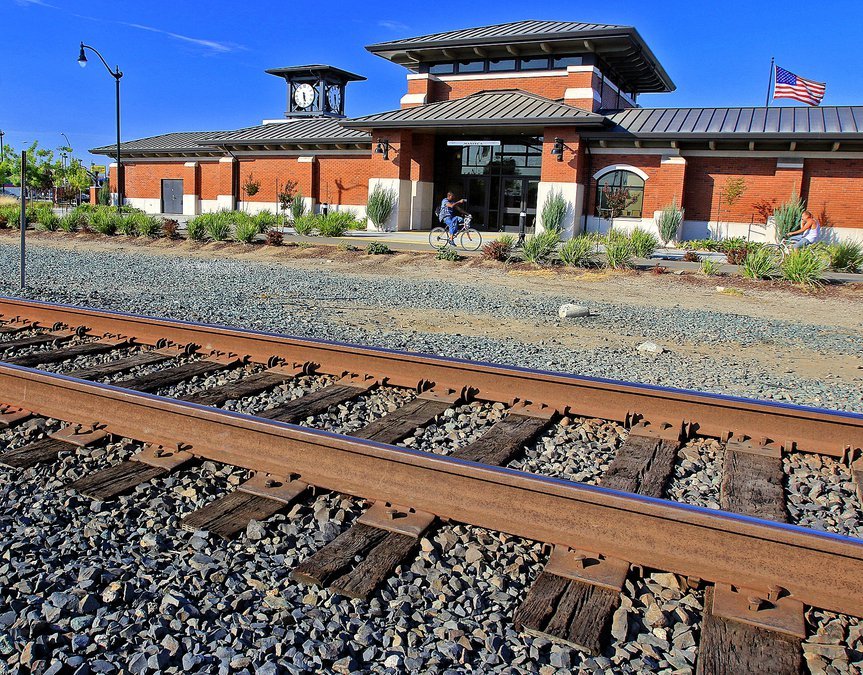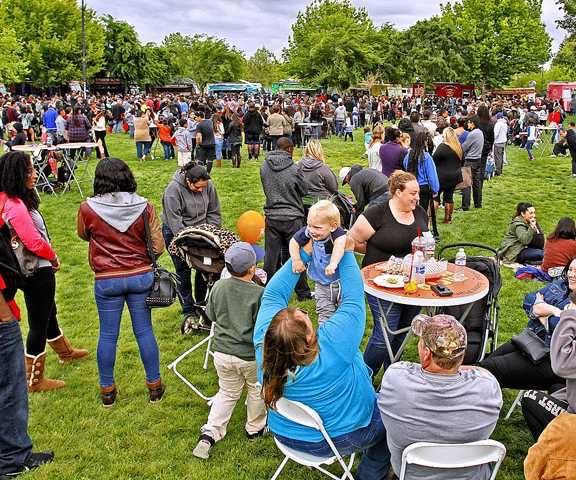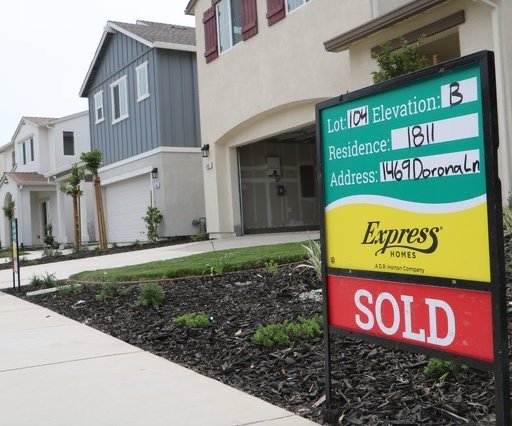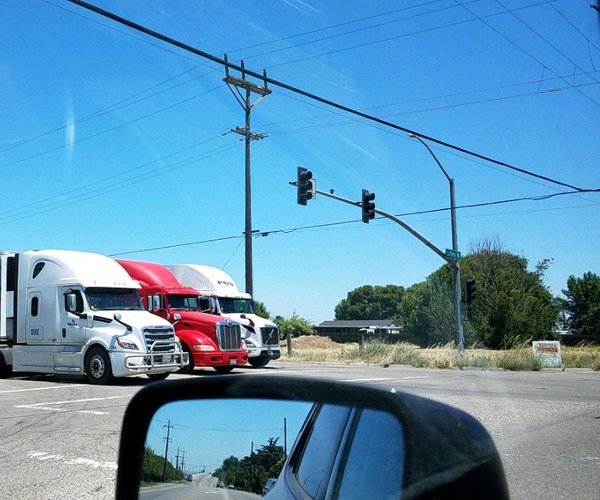Got business in Bakersfield when the year 2029 rolls around?
Then drive, walk, or take a transit bus to the Manteca Transit Center on Moffat Boulevard. There you’ll be able to plop down serious moneys for what is likely to be a pricey ticket with a transfer of trains in Merced.
You may be asking yourself the $105 billion question and counting: Will there be enough demand for travel to Bakersfield from up the valley and the Bay Area to justify even one train a day?
It doesn’t matter what the answer is to that question. It’s going to happen whether it makes sense. That’s because once a major public works endeavor in California starts devouring funds it becomes a combination vampire/zombie sucking up money so it can survive and becoming essentially impossible to kill.
If that sounds familiar, it is. That’s because it is the unofficial business plan of The Big Lie, also known as the California High Speed Rail project.
It should be clear by now that high speed rail backers in 2008 were blowing smoke that make whatever smoke wildfires PG&E equipment have generated in the past six years seem like a mere wisp.
As lies go it was one for the ages.
LIE NO. 1: The high speed segment from Los Angeles to San Francisco would be up and running by 2033.
THE REALITY: The earliest now that any train with passengers may roll would be 2029 with service between Merced and Bakersfield only.
LIE NO. 2: The segment from LA to SF will cost $40 billion
THE REALITY: As of this week the rail authority pegs the cost at $105 billion due to unforeseen issues. Wait until they start tunneling under the San Andreas Fault by Pacheco Pass where significantly more unforeseen issues await. Rest assured the $105 billion will look like chicken feed compared to the final cost.
LIE NO. 3: Trains will move at 220 mph.
THE REALITY: Now the public is being told 170 mph may be the tops. If that is what trains will at actually run at considering this: With each passing year the price tag gets higher and the promised train speeds get slower.
LIE NO. 4: It will cost less than $100 per person to ride from LA to San Francisco with no need for operational subsidies.
THE REALITY: It will likely cost more than $100 and that’s with heavy subsidies from gasoline taxes and cap-and-trade programs that deprive other transportation needs and environmental initiatives of needed financial resources.
LIE NO. 5: The business plan is so solid the nearly $10 billion bond voters approved in 2008 for the project will leverage significant private sector investment to complete it.
THE REALITY: Not only hasn’t there been a single bite since 2008 on the state project, but the smart private sector investments are being made for Brightline West to connect Las Vegas with Victorville in the Los Angeles Area with a 170-mile high speed rail track.
The there are other variables the high speed folks haven’t nailed down.
One includes the rather basic issue of electricity to power the system. Recently the high speed authority has conceded there are segments of the initial route that have issues with obtaining adequate power.
Let’s look at that initial segment. Many are under the false assumption when the initial 119-mile project is completed there will be a semi-usable high speed rail segment in place.
Guess again as there is a reason it was accurately dubbed “The Train to Nowhere.”
A contract for another 52 miles will have to be awarded. Why that hasn’t happened is due to a little detail — the rail authority still doesn’t have funding in hand to make even the first 119 miles operational.
Besides the fact the system is going to be prohibitively expensive for most Californians to use, will require substantial ongoing operational subsidies, is going to be significantly slower than promised, create a humungous demand for power at the same time the state is pushing for 100 percent electric cars that need harming and moving to replace everything powered by natural gas such as water heaters to heating systems, and creates a high profile target for terrorism and sabotage what else could possibly go wrong?
Whether the one-seat connection downtown San Francisco to downtown Los Angeles eventually happens there are two clear scenarios of what will take place once the Merced to Bakersfield link becomes operational. One will occur and the other is highly plausible.
The first involves a hybrid system to avoid the high speed rail from Bakersfield to Merced from being the butt of late TV jokes as being a train that runs from a cow city of 90,000 to the hometown of Buck Owens.
The plan to avoid that is to provide connecting bus service from Bakersfield to Anaheim/Los Angeles on the southern end.
On the northern end Altamont Corridor Express trains will connect Merced with the Bay Area.
Assuming the missing link will go ahead before the problematic Pacheco Pass route to San Francisco due to a need to get people onto trains and not buses as well as the fact there isn’t likely money to be available to build both connections at once, the ACE service ferrying high speed rail passengers transferring riders at Merced will be in place easily for a decade or so.
That means many more trains than the three now planned to stop in Manteca and Ripon starting in 2023 will pass through both communities as part of the funded endeavor to extend ACE service to Ceres and Natomas north of downtown Sacramento as well as connect Ceres to San Jose.
The impact will be minimal on Ripon as they have no at-grade crossings ACE will use. That is not the case for Manteca.
Additional ACE service to get high speed riders from Merced to San Francisco/Sacramento will involve eight at-grade crossings in Manteca as the 120 Bypass/Highway 99 upgrade will eliminate an at-grade crossing by having the replacement four-lane Austin Road bridge span the tracks as well.
Those on ACE trains taking high speed riders from Merced to San Jose will cross those eight streets as well as three others for a total of 11 Manteca crossings.
The other scenario would involve permanently abandoning the Pacheco Pass route in favor of a system that would send high speed to the Lathrop ACE hub being planned where transfers can get you to San Jose via ACE, to Sacramento via ACE or San Francisco via Valley Link and then BART.
Regardless it is a safe bet for 10 years plus if not indefinitely high speed passengers going from LA to either the Bay Area or Sacramento will need to hop aboard ACE trains in Merced to do so.
This plugs Manteca, Lathrop, and Ripon directly into a rail system where you can literally catch a train with no transfers or just one to reach Los Angeles, San Jose, Sacramento, or San Francisco.
At the same time it means a significant jump in rail traffic through the three cities with the biggest impacts being on Manteca with its 11 at-grade crossings.
This column is the opinion of editor, Dennis Wyatt, and does not necessarily represent the opinions of The Bulletin or 209 Multimedia. He can be reached at dwyatt@mantecabulletin.com






